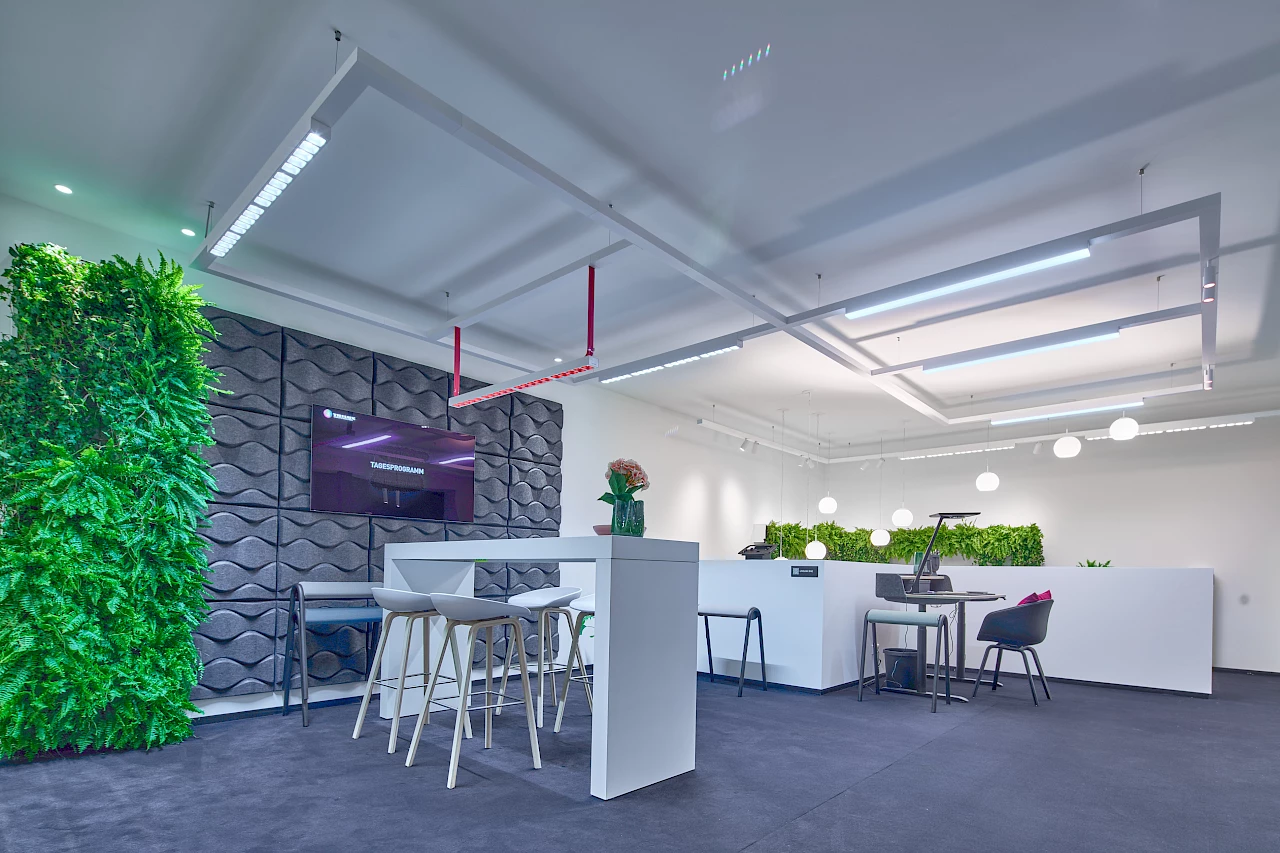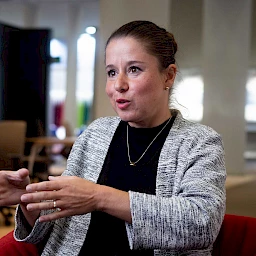Lighting plays a central role in the office, far beyond mere illumination. The IBA Forum editorial team spoke with lighting expert Heiner Hans about the latest trends in lighting design for offices and workspaces, the effects of light on health and well-being, and practical experiences with human-centric lighting.
Mr Hans, in your guest article on IBA Knowledge, you talk about the changes in office work and the growing importance of lighting. What trends do you currently see in lighting design for offices and workspaces?
Light always has an effect. This means that when developing and implementing a lighting concept, the focus is no longer exclusively on visual requirements, but increasingly also on the emotional and biological effects on people. To explain: emotional effects arise from the physiological impact of light on perception in interaction with architecture. Biological effects take into account the fact that the spectral composition and intensity of light have a direct influence on the human body. With this holistic planning approach, we ensure that the health, well-being, and performance of users are the focus of attention.
How can lighting situations in offices be customized in the best possible way?
There is no magic formula for this. However, it is important that modern lighting systems can be controlled via a lighting management system. Individual settings allow the lighting to be adapted precisely to the needs of employees. Frequently used options include preset lighting scenes, stepless adjustment of brightness and light color, and, in the case of circadian controls, individual adjustment of the time sequence throughout the working day. The mostly integrated presence detection and daylight detection ensure the efficiency of the overall system.
In the article, you discuss the concept of human-centric lighting (HCL). What experience have you had with the use of HCL in office environments in terms of productivity and employee well-being?
In more and more office projects today, building owners explicitly want lighting concepts to take into account new findings on the positive influence on well-being in particular, in order to rekindle employees’ enthusiasm for their workplace. In this respect, the development of HCL concepts is increasingly becoming common practice. And there are other issues to consider, such as the demand for greater sustainability. One example of this is the Center of Climate at Zehnder in Lahr. Here, a new building has been created that is both a space for innovative ideas and learning, and a place for employees, customers, and visitors to meet and exchange ideas. When defining the lighting concept, the aim was to provide the workplaces with maximum natural daylight without glare and to supplement this with daylight-like artificial light only when necessary. The smart control system used coordinates the sun protection and HCL lighting in real time, thus always creating optimal lighting conditions and high user acceptance with minimal energy consumption. It is gratifying that the benefits of HCL have also found their way into standardization, which takes scientific findings and practical experience into account. DIN/TS 67600 “Supplementary criteria for lighting design with regard to non-visual effects of light” contains corresponding planning recommendations.
Visit the Work Culture Festival from October 22 to 25 at ORGATEC in Cologne.

What role does the flexibility of lighting systems play in view of changing workplace requirements?
If only to avoid costs and operational interruptions, a relatively new lighting system should not have to be replaced when, for example, the work situation or room usage changes. A short service life would also contradict the growing demand for sustainability. Modern luminaires are therefore designed for long service lives and can be repaired quickly and easily in the event of component failure, e.g., by replacing control gear or LED modules. Both mobile and stationary lighting systems offer maximum flexibility. They can be (re)equipped with suitable luminaire inserts without the need for tools to provide the required light. In addition, light management enables the subsequent programming of new lighting scenes, for example, in the event of new zoning..
What problems do you currently see in the implementation of modern lighting concepts in office?
Only when all those involved and affected have the necessary knowledge about the planning, installation, and operation of lighting systems can the office become a place of concentration and creativity where people also feel comfortable. All too often, for example, training users in the operation of their lighting systems is simply forgotten. This can concern the correct installation and adjustment of a table lamp, the use of a control panel, or the setting options for a lighting management app. Occupational safety specialists report that some users do not even switch on their new lighting systems, but instead bring a table lamp from the hardware store. This is an alarm signal that companies should take seriously. Lighting professionals—i.e., planners, installers, or facility managers—can expand their knowledge through webinars, seminars, or courses offered by specialized academies. A good place to start is the Working Group of Lighting Academies (ALA), whose addresses can be found at ala-info.de.
What advice would you give to companies looking to modernize their office lighting or adapt it to new working concepts? Are there any best practices or recommendations you would like to share with our readers?
An experienced lighting designer with good references and proven qualifications is the right person to contact. Qualifications such as a relevant degree or certifications as a DIN-certified lighting technician or European Lighting Expert (ELE), which confirm the necessary skills and knowledge by a neutral body, provide helpful guidance. Based on information about the users, the visual tasks, the usage time, and the premises, a qualified lighting designer will develop a customized concept in a structured process and document the planning in a comprehensible manner.
Dipl.-Ing. Heiner Hans studied electrical engineering at the Technical Universities of Dortmund and Braunschweig. From 1985 to 2023, he worked at TRILUX in Arnsberg, where he was responsible for the Technical Communication, Application Technology, and Operational Marketing departments. From September 2011, he headed the TRILUX Academy with various locations in Europe. Since retiring, Heiner Hans has been supporting the transfer of knowledge about good lighting as a lecturer and author. Further information is available at https://www.linkedin.com/in/heiner-hans-20375370/.
Cover photo: TRILUX






